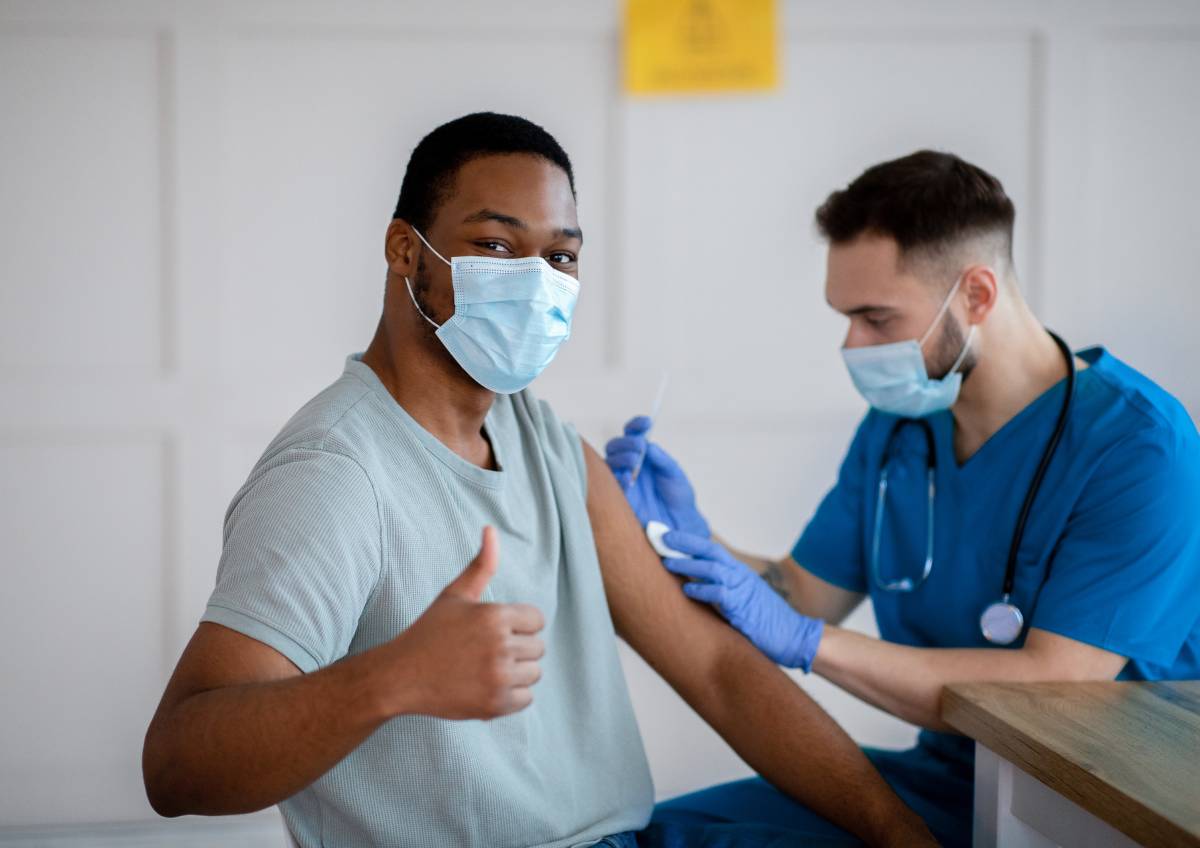Current Research on COVID-19 Booster Shots

As the COVID-19 pandemic rages on, much discussion has revolved around the efficacy and practicability of administering booster vaccine shots to fully immunized people. Indeed, recent evidence indicates that immunity wanes over time, especially against the delta variant of SARS-CoV-2 [1]. Given the troubles associated with diminishing immunity and rising variants, a third dose may be necessary to finally end this unprecedented pandemic [1].
Accordingly, many recent trials have sought to test the efficacy of booster COVID-19 vaccine shots. One such study, conducted by Flaxman et al. at the University of Oxford, administered a third dose to 75 patients, aged 18 to 55, who had already completed a two-dose regimen [2]. The researchers noted that a third dose led to significantly boosted T-cell responses [2]. Furthermore, the third dose contributed to substantially increased binding antibody titers to the beta variant, as well as notably higher levels of neutralizing titers against the alpha, beta, delta variants of the virus [3]. In a pre-print, Pan et al. indicated similar results. The 540 participants that they treated with a third dose exhibited statistically significant augmentations in their antibody levels, suggesting pronounced immunogenicity following COVID-19 booster shots [4].
Researchers also found promising results when testing booster shots on certain immunocompromised populations. For instance, a trial conducted by Hall et al. on solid-organ transplant recipients suggested that a third dose may be a viable strategy for countering disease in this incredibly susceptible group [5]. Because of medications meant to counter graft rejection, their immune response to vaccinations is often weaker than the non-transplant population’s response [5]. Hall et al. reported evidence that a third dose led to a mean fold change in anti-RBD antibody levels 75 times higher than the levels exhibited by the placebo group, whose members had only received two doses [5]. However, adverse events were more common among the booster group than the placebo group, but they were mild and did not lead to any organ rejections or hospitalizations [5].
Peled et al. narrowed their focus to heart transplant (HT) patients and found evidence in concert with Hall et al. 96 HT patients received a third dose [6]. Eighteen days afterward, their positive antibody response had grown from 23% to 67% [6]. Their IgG anti-RBD antibodies were more than 3-fold higher and their neutralizing titers more than 9-fold higher than after the second dose [6]. Again, no severe adverse events, nor any rejection episodes, were reported [6].
Solid-organ transplant recipients are not the only immunocompromised population who could stand to benefit from a COVID-19 booster shot: thoracic cancer and lymphoid malignancy patients have also exhibited seemingly positive reactions to a third dose [7, 8]. In the case of thoracic cancer patients–a group with a 30% mortality rate for COVID-19–a third dose may produce an 88% immunization rate [7]. For lymphoid malignancy patients, the booster led to increased humoral immune responses [8]. This was especially true among patients suffering from multiple myeloma [8]. For now, these findings are not definitive; both studies were small and are currently in pre-print. Still, researchers should continue investigating these demographics to see whether COVID-19 mortality can indeed decrease if more patients receive a booster dose of the COVID-19 vaccine.
Ultimately, considering how only 12.6 million of the 4.46 billion administered doses of COVID-19 vaccine have gone to low-income countries, it may be best to halt booster shot administration, at least among those without pronounced comorbidities, to instead focus on increasing vaccination rates worldwide [9]. For the time being, researchers should focus on conducting larger trials to ascertain that a booster will indeed confer significant benefits against COVID-19.
References
[1] E. Mahase, “Covid-19 booster vaccines: What we know and who’s doing what,” BMJ, vol. 374, no. 4, p. 1-2, August 2021. [Online]. Available: https://doi.org/10.1136/bmj.n2082.
[2] A. Flaxman et al., “Tolerability and Immunogenicity After a Late Second Dose or a Third Dose of ChAdOx1 nCoV-19 (AZD1222),” The Lancet, Updated September 1 2021. [Online]. Available: https://doi.org/10.1016/S0140-6736(21)01699-8.
[3] E. Mahase, “Covid-19: Third vaccine dose boosts immune response but may not be needed, say researchers,” BMJ, vol. 373, p. 1, June 2021. [Online]. Available: https://doi.org/10.1136/bmj.n1659.
[4] H. Pan et al., “Immunogenicity and safety of a third dose, and immune persistence of CoronaVac vaccine in healthy adults aged 18-59 years: interim results from a double-blind, randomized, placebo-controlled phase 2 clinical trial,” medRxiv, Updated July 25 2021. [Online]. Available: https://doi.org/10.1101/2021.07.23.21261026.
[5] W. W. Williams and J. R. Ingelfinger, “Third Time’s a Charm — Covid-19 Vaccine Hope for Solid-Organ Transplant Recipients,” The England Journal of Medicine, p. 1-2, August 2021. [Online]. Available: https://doi.org/10.1056/NEJMe2112866.
[6] Y. Peled et al., “Third dose of the BNT162b2 vaccine in heart transplant recipients: immunogenicity and clinical experience,” The Journal of Heart and Lung Transplantation, Updated August 28 2021. [Online]. Available: https://doi.org/10.1016/j.healun.2021.08.010.
[7] V. Gounant et al., “Efficacy of SARS-CoV-2 vaccine in thoracic cancer patients: a prospective study supporting a third dose in patients with minimal serologic response after two vaccine doses,” medRxiv, Updated August 13 2021. [Online]. Available: https://doi.org/10.1101/2021.08.12.21261806.
[8] D. Re et al., “Humoral and cellular responses after a third dose of BNT162b2 vaccine in patients treated for lymphoid malignancies,” medRxiv, Updated July 22 2021. [Online]. Available: https://doi.org/10.1101/2021.07.18.21260669.
[9] The Lancet Infectious Diseases, “COVID-19 vaccine equity and booster doses,” The Lancet Infectious Diseases, vol. 21, no. 9, p. 1193, September 2021. [Online]. Available: https://doi.org/10.1016/S1473-3099(21)00486-2.
